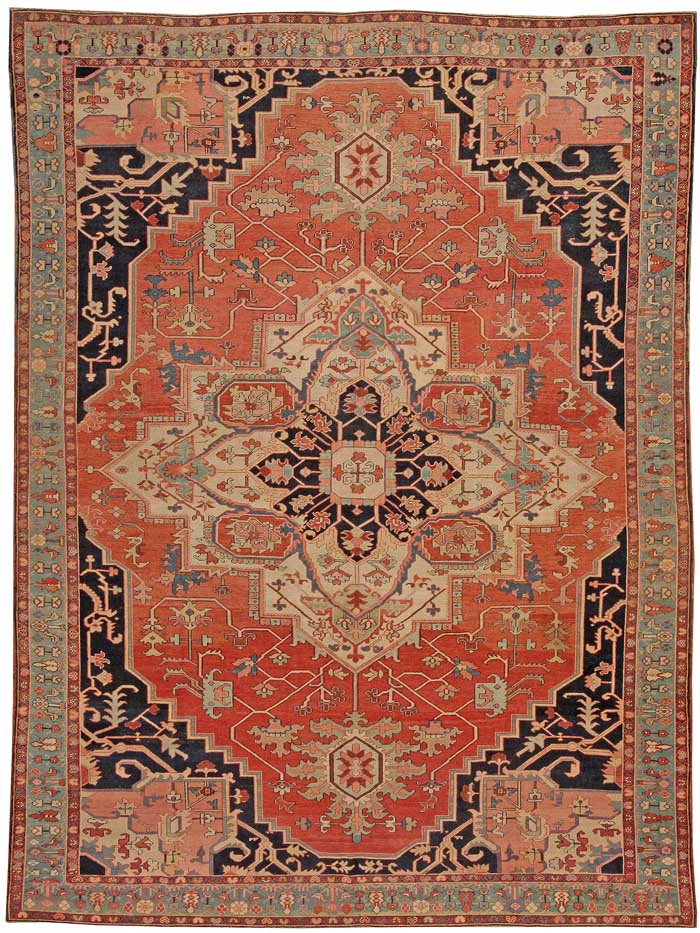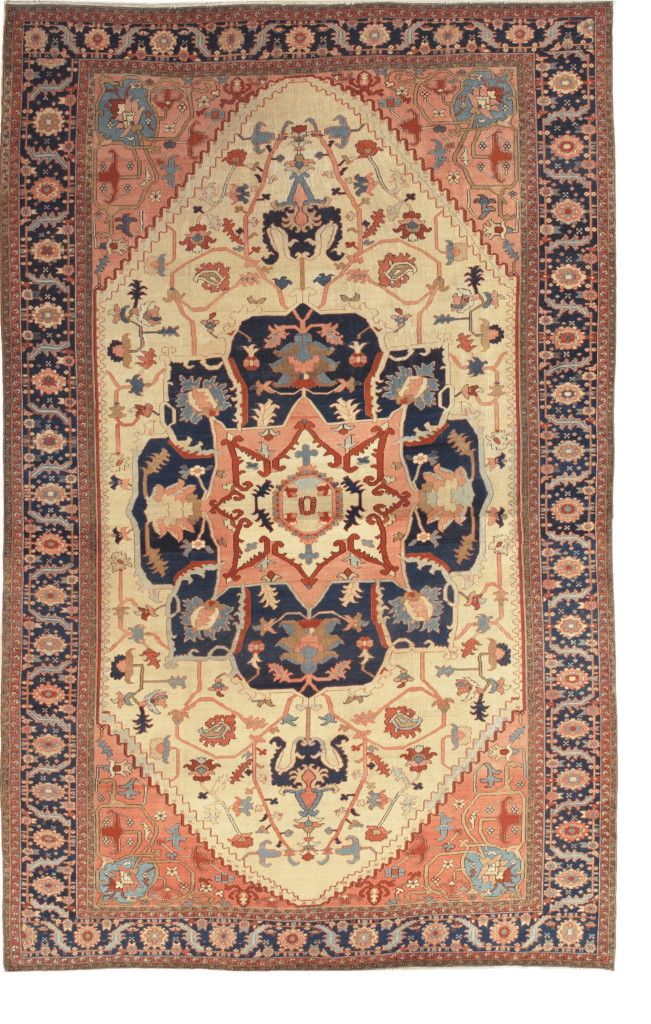Are Heriz and Serapi identical rug types, or do they exhibit differences?
What is the difference between a Heriz and a Serapi? First, it is a valid question because there is no place called Serapi, although there are villages in the Heriz region. Second, antique Serapi and Heriz rugs were produced in the same area. However, antique Serapi are most valued today.

Among rug traders, Heriz became the widely accepted term for all the dozens of villages that wove rugs in this style. Ahar, Mehrivan, Gorevan, and others are applied to Heriz rugs. All are names of neighbouring towns, and each carpet is made with unique characteristics linked to these locations. For example, a Gorevan is made in the Gorevan village and is generally a larger rug, and its knots are the thickest of the Heriz family rugs. Karadja is produced in the town of the same name and is a Heriz with a distinct geometric pattern, formed by a hook-shaped diamond flanked by two medallions arranged along a vertical axis in the centre. Serapi was the name used for the oldest and most refined of these rugs. At the end of the 19th century, dealers, traders, and importers classified and mentioned the names of these villages on their invoices and shipping statements about the quality and value of the pieces, asking for a higher price for the most exquisite pieces.
The term “Serapi” is often misunderstood to refer to a separate village, akin to the naming convention of other rugs. However, it’s a misinterpretation of the village name “Serab”. Some suggest that “Serapi” signifies origin from Serab. However, essentially, a Serapi rug is an antique Heriz rug, woven before 1910. The term “Serapi” was coined to denote these older, higher quality Heriz rugs.
Serapi rugs are distinguished by superior wool quality, a more basic design, and a limited color palette. They differ from Heriz rugs in weave and design specifics. Heriz rugs typically feature darker, vibrant colors and intricate details. In contrast, Serapi rugs have a more open design with fewer geometric figures and softer tones. Serapi rugs are always antiques, while Heriz rugs are still produced today. The appeal of Serapi rugs lies in their finer, superior quality weave.
As a result, due to their rarity, Serapi are generally pricier than Heriz rugs. Modern reproductions attempt to mimic the terracotta colors and rounded designs characteristic of Serapi rugs, but at a lower cost.


Figalli Oriental Rugs
We do not sell rugs. We bring rare works of art to your home in the form of rugs.
Our services
You are Protected
Copyright © 2023 Figalli Oriental Rugs, All rights reserved. Desenvolvido por Agência DLB – Agência de Marketing Digital em Porto Alegre
